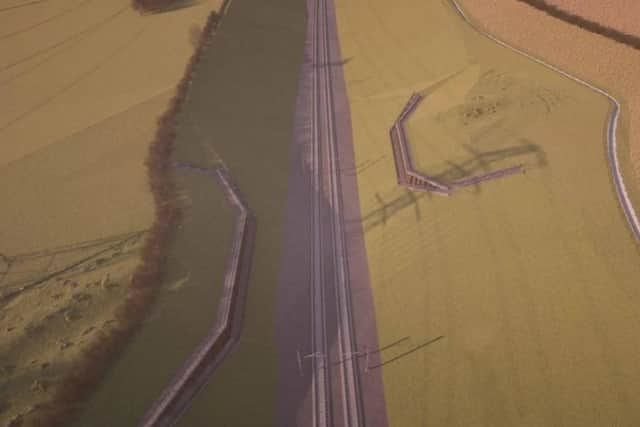The bustling town of Aylesbury is bracing itself for significant travel disruptions as a crucial thoroughfare into the town is […]
The controversial HS2 railway project, which has faced both public and political scrutiny, is set to partially destroy an ancient monument in Buckinghamshire. This decision comes after the company responsible for building the High-Speed 2 (HS2) railway received the green light from Buckinghamshire Council.
A Controversial Decision
The Buckinghamshire Council’s decision to grant permission for the partial destruction of the ancient monument has sparked a significant debate among historians, conservationists, and the general public. The monument, which has stood the test of time for centuries, represents a vital piece of the region's cultural heritage. Opponents argue that its destruction undermines efforts to preserve historical sites for future generations.
The HS2 Project: Background and Implications

The HS2 railway project aims to provide a high-speed rail network connecting London, Birmingham, and the north of England. Proponents argue that it will bring economic growth, reduce travel times, and alleviate congestion on existing rail lines. However, the project has been fraught with controversies, including environmental concerns, cost overruns, and now, the partial destruction of an ancient monument.
Buckinghamshire Council’s decision to approve the project despite the anticipated damage to the historic site suggests a prioritisation of infrastructure development over heritage conservation. While the council recognises the importance of preserving history, it also acknowledges the potential benefits of the HS2 project in terms of modern transportation needs.
Responses from Stakeholders
The response from various stakeholders has been mixed. Conservationists and local historians have expressed their disappointment and outrage, arguing that once such historical sites are destroyed, they cannot be recovered. They emphasise that preserving our heritage is crucial for maintaining a sense of identity and continuity with the past.
On the other hand, supporters of HS2 point to the long-term benefits of improved transportation infrastructure. They argue that the economic boost and increased connectivity provided by HS2 outweigh the costs to historical preservation. They also highlight efforts made by the HS2 company to minimise the impact on the monument and explore possibilities for archaeological studies before the construction proceeds.
Looking Forward
As the HS2 project moves forward, the focus will undoubtedly remain on balancing progress with preservation. The decision by Buckinghamshire Council underscores the challenging choices that authorities face when it comes to developing modern infrastructure while respecting and protecting historical landmarks. The debate over the partial destruction of the ancient monument will likely continue, serving as a reminder of the ongoing tension between development and conservation.
In a world where rapid advancements often necessitate difficult sacrifices, the HS2 project’s impact on Buckinghamshire's ancient monument is a poignant example of the complex interplay between history and progress.